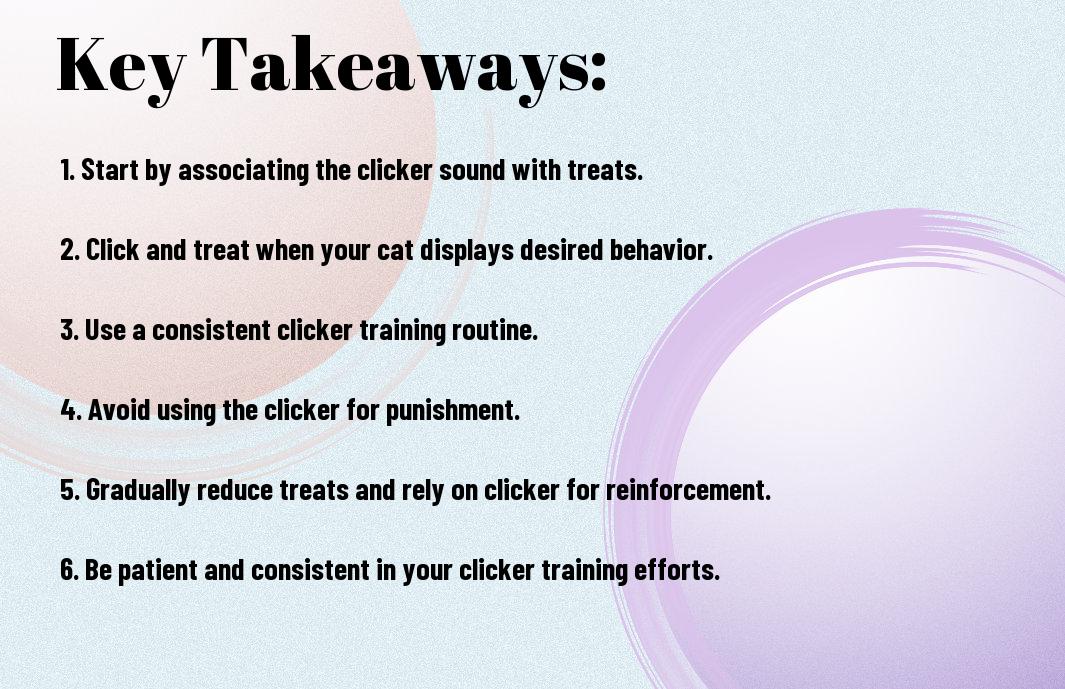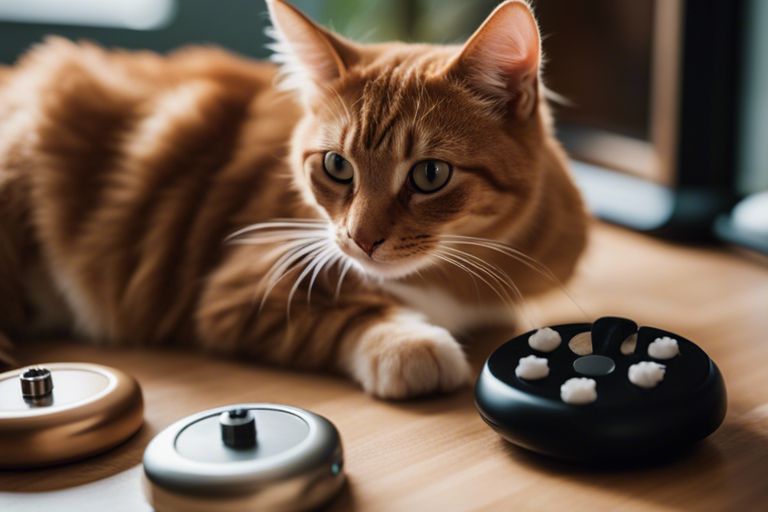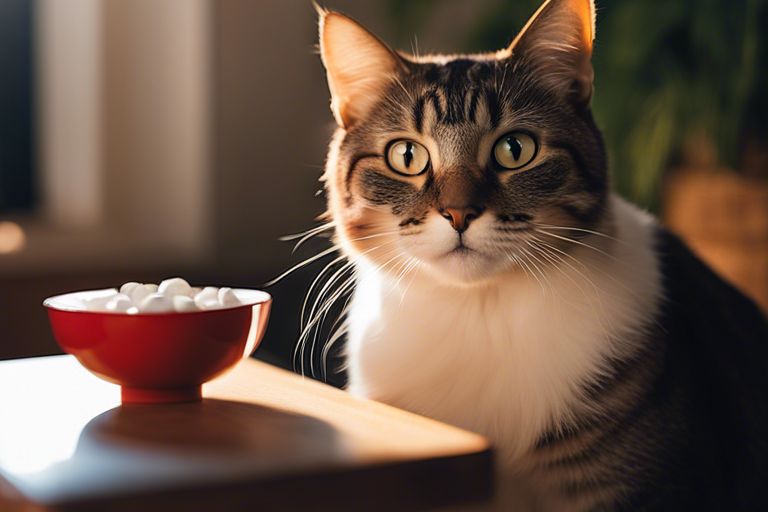Congratulations on taking the first step towards utilizing clicker training for your feline friend. Training your cat to use a clicker can be a highly effective method for positive reinforcement, but it’s important to approach it with patience and consistency. By following the right steps and being consistent, you can effectively train your cat to respond to the clicker, paving the way for a more harmonious and rewarding relationship with your pet.
Key Takeaways:
- Consistency is key: When training your cat to use a clicker for positive reinforcement, it’s important to be consistent with the timing of the click and the reward that follows. This will help your cat understand the association between the behavior and the clicker.
- Start with food rewards: Initially, use food rewards in combination with the clicker to reinforce the desired behavior. Once your cat has grasped the concept, you can gradually transition to using the clicker alone as the reward.
- Keep training sessions short: Cats have short attention spans, so it’s important to keep training sessions brief and enjoyable. Aim for 5-10 minute sessions and schedule them at a time when your cat is most active and alert.
- Be patient and positive: Like any form of training, teaching your cat to use a clicker requires patience and a positive attitude. Use gentle encouragement and avoid punishment, as this can have a detrimental effect on the training process.
- Gradually increase difficulty: Once your cat has mastered the basics of clicker training, you can start introducing more complex behaviors and challenges. Gradually increase the difficulty level to keep your cat engaged and continuously learning.


Fundamentals of Clicker Training
Some cat owners may have heard about clicker training, but not everyone understands the fundamentals of this positive reinforcement technique. Clicker training is a method of training animals using a clicker, which makes a distinct sound when pressed. The sound of the clicker is used to mark desired behaviors and is then followed by a reward, such as a treat or praise. This method is based on the principles of operant conditioning, where the cat learns to associate the click with a positive outcome, and therefore, is more likely to repeat the behavior in the future.
Choosing the Right Clicker
When it comes to clicker training your cat, choosing the right clicker is essential. The most common type of clicker is a small plastic device that makes a sharp, consistent sound when pressed. It’s important to choose a clicker that is comfortable for you to hold and easy for your cat to hear. Additionally, some clickers have adjustable volume settings, which can be useful if your cat is sensitive to loud noises. You can also opt for a clicker with a wrist strap, so you can easily carry it around while training your cat.
The Psychology Behind the Click
Understanding the psychology behind the click is crucial for effective clicker training. When you press the clicker and follow it immediately with a reward, you are creating a strong association between the behavior and the positive outcome. This process is known as classical conditioning, where the sound of the click becomes a cue for your cat that a reward is coming. The clicker serves as a precise marker for the exact moment your cat performs the desired behavior, making it a powerful tool for communication and reinforcement.

Step-by-Step Guide to Clicker Training
Despite the many training techniques available, clicker training has emerged as an effective and popular method for cat owners seeking to reinforce positive behavior. Clicker training employs the use of a small device that emits a distinct clicking sound, paired with a reward, to indicate to the cat that they have performed the desired behavior. This form of positive reinforcement can be highly effective in training your cat. Here is a step-by-step guide to clicker training your feline friend.
| Step 1: Getting Your Cat Comfortable with the Clicker | Step 2: Establishing the Connection Between the Click and the Reward |
Getting Your Cat Comfortable with the Clicker
The first step in clicker training your cat is to get them comfortable with the sound of the clicker. Introduce the clicker to your cat by clicking it and then immediately offering a treat. Over time, your cat will begin to associate the sound of the clicker with the reward. It’s important to ensure that the clicking sound is not associated with any negative experiences, so be sure to follow up the click with a treat every time.
Establishing the Connection Between the Click and the Reward
Once your cat is comfortable with the clicker, it’s time to establish the connection between the click and the reward. Start by clicking the device and immediately offering a treat. Repeat this process several times, ensuring that the click always precedes the delivery of the reward. It’s important to be consistent with this process, as it will help your cat understand that the click is a signal for a job well done.
Advancing Your Cat’s Training
Your cat has already mastered the basics of clicker training, and now you’re ready to take their training to the next level. To continue their progress and reinforce their positive behaviors, it’s important to keep training sessions consistent and engaging. For more in-depth guidance on clicker training for cats, you can refer to How to clicker train your cat.
Teaching Basic Commands with Clicker Reinforcement
Once your cat is comfortable with the clicker and has responded well to initial training, you can start teaching them basic commands like “sit,” “stay,” and “come.” Use the clicker to mark the desired behavior, and then immediately reward your cat with a treat. Consistency and patience are key as you work on teaching these more advanced commands. Be sure to keep training sessions short and positive to prevent your cat from becoming overwhelmed.
Troubleshooting Common Clicker Training Issues
If you encounter any challenges during your cat’s clicker training, it’s important to address them promptly. Common issues may include your cat becoming disinterested or distracted during training sessions, or failing to respond to the clicker. In such cases, it’s essential to assess the situation and determine the cause of the problem. Adjusting the training environment, using higher value treats, or offering more frequent rewards may help to re-engage your cat. Remember, patience and positive reinforcement are essential for overcoming these obstacles and continuing your cat’s training progress.
Maintaining Progress and Enhancing Bonding
After successfully introducing the clicker to your cat and starting basic training, it’s important to maintain progress and continue building a strong bond with your feline friend. Consistency and patience will be key in this stage of clicker training, as well as keeping your cat engaged in training sessions and understanding the role of patience and consistency in successful clicker training.
Keeping Your Cat Engaged in Training Sessions
It’s essential to keep your cat engaged and eager to participate in training sessions. Vary the training activities and keep them short and fun to maintain your cat’s interest. You can also incorporate their favorite treats and toys to keep them motivated and focused during the training. Remember to end each session on a positive note to leave your cat wanting more.
The Role of Patience and Consistency in Successful Clicker Training
Patience and consistency are vital components of successful clicker training. It’s essential to be patient with your cat and understand that learning takes time. Use positive reinforcement and rewards consistently to reinforce good behavior. It’s important to avoid getting frustrated or showing any signs of impatience during training sessions, as this can negatively impact your cat’s progress. Your consistency and positive attitude are key in helping your cat understand and respond to the clicker for positive reinforcement.
Conclusion
Following this guide, you now have a better understanding of how to train your cat to use a clicker for positive reinforcement. Remember to be patient and consistent with your training, and always reward your cat with treats and praise when they respond to the clicker. With time and practice, your cat will learn to associate the clicker with positive behaviors, making training sessions more enjoyable and effective for both of you. By implementing these techniques, you can build a strong bond with your feline companion and enhance their learning experience.
FAQ
Q: What is a clicker and how can it be used for positive reinforcement in cat training?
A: A clicker is a small, handheld device that makes a distinct clicking sound when pressed. It is used in conjunction with positive reinforcement training to signal to the cat that they have performed a desired behavior. The clicker serves as a clear and consistent marker for the cat, allowing them to understand exactly which behavior is being rewarded.
Q: How can I introduce my cat to the clicker and get them used to its sound?
A: Start by associating the clicker with something positive, such as a treat. Press the clicker and immediately give your cat a treat. Repeat this several times throughout the day to create a positive association with the sound of the clicker. Once your cat is comfortable with the sound, you can begin using the clicker to mark desired behaviors and follow up with a treat or another form of positive reinforcement.
Q: What are some common mistakes to avoid when using a clicker for cat training?
A: One common mistake is not being consistent with the timing of the click. It’s important to click at the exact moment the desired behavior occurs, so the cat can clearly understand what they are being rewarded for. Additionally, it’s important to always follow up the click with a reward to reinforce the behavior. Another mistake is using the clicker too much or too little. Click only when the cat performs the specific behavior you are trying to train, and avoid clicking for any other actions. Lastly, avoid using the clicker as a form of punishment or to startle the cat, as this can create negative associations with the clicker and undermine its effectiveness in training.

Jayley, a devoted cat enthusiast, also writer for other cat blog as well. She aims to dedicated to providing comprehensive information, insights, and advice on everything you’d ever want to know about our whiskered companions.
